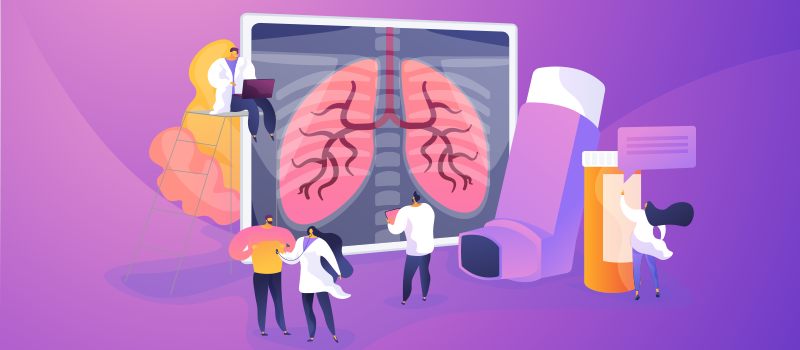What’s the Buzz
The Bee Healthy Blog
What is Hyperhidrosis and Can It Be Treated?

It’s normal to sweat when it’s hot or when you’re nervous. Indeed, sweating is an essential body function that keeps you from overheating. But some people can sweat for no reason. This excessive sweating in the hands, feet, armpits, and face may be due to a medical condition called hyperhidrosis.
It is estimated that some 15 million Americans have hyperhidrosis. The condition can cause social anxiety and embarrassment, yet many people suffer in silence and don’t seek treatment. The truth is that there are many effective ways to treat hyperhidrosis. Please continue reading to learn more.
What is hyperhidrosis?
Hyperhidrosis is a medical condition in which there is excessive sweating for no apparent reason, i.e., even when the body doesn’t need cooling or you’re not anxious. Hyperhidrosis symptoms commonly occur on the palms, feet, underarms, and head. The excess sweating may be limited to one or two areas of the body while the rest of the body remains dry.
Excessive sweating caused by hyperhidrosis can be embarrassing because of dripping sweat, obvious sweat marks, and body odor. Hyperhidrosis can also interfere with daily activities. For example, sweaty hands can make it difficult to turn a doorknob or hold a pen. Lastly, because excessive sweating leaves the skin damp for long periods, you can develop skin infections such as jock itch and athlete's foot.
What are the different types of hyperhidrosis?
According to the International Hyperhidrosis Society, there are two types of hyperhidrosis.
Primary Hyperhidrosis
Primary hyperhidrosis (also called focal hyperhidrosis) typically develops during childhood or adolescence in otherwise healthy individuals. There is no medical cause for it. The excessive sweating occurs in focal areas (a few parts of the body) on both sides.
The underarms, hands, feet, and face are most commonly affected. Primary hyperhidrosis is called various names such as axillary hyperhidrosis (underarms), palmar hyperhidrosis (hands), and plantar hyperhidrosis (soles of the feet). Gustatory sweating occurs on the face while eating, talking, or thinking about food.
The excessive sweating in primary hyperhidrosis occurs at least once a week and starts soon after awakening. However, there are no night sweats unless the room is excessively hot.
Secondary Hyperhidrosis
In secondary hyperhidrosis, excessive sweating happens due to an underlying medical condition or side effect of medications, and it usually develops in adults. It is called secondary hyperhidrosis because something triggers sweating. Medical conditions that can cause secondary hyperhidrosis include frostbite, diabetes, gout, hyperthyroidism (overactive thyroid gland), menopause, obesity, tumors, and injuries. In people with secondary hyperhidrosis, there is excessive sweating in the entire body rather than focal areas (generalized hyperhidrosis). There can also be night sweats (excessive sweating during sleep). It’s important to have this condition evaluated by medical professionals.
How do I know if I have hyperhidrosis?
Excessive sweating without any cause is the main symptom. People with hyperhidrosis:
- Sweat even in the absence of physical exertion or hot weather.
- Sweat so much that it interferes with daily activities.
- Experience skin problems like soft, white, peeling skin.
- Suffer from complications of hyperhidrosis, such as frequent skin infections in areas that sweat heavily.
If you have these hyperhidrosis symptoms, you should consult a dermatologist.
What causes hyperhidrosis?
It is believed that hyperhidrosis occurs due to a problem with the nerves that control sweating. The risk is higher in people who have a family member with hyperhidrosis. The condition is not contagious (you cannot give it to someone). People of all ethnicities and skin colors can get hyperhidrosis. Climate does not play a role in these sweat disorders, and you can get hyperhidrosis even if you live in a cold climate.
Does hyperhidrosis go away over time?
Hyperhidrosis does not go away over time, but there are many effective ways of treating excessive sweating. It is important to have hyperhidrosis diagnosed and treated by a dermatologist.
What is the most effective hyperhidrosis treatment?
Hyperhidrosis treatments depend on the type of hyperhidrosis and the affected area. Here are some of the options that a dermatologist may offer for treating hyperhidrosis.
Antiperspirants
A regular or clinical-strength antiperspirant is usually the first-line treatment for people with hyperhidrosis. It is an effective and affordable way to absorb sweat.
Areas treated: Hairline, underarms, hands, feet.
How it works: The antiperspirant contains aluminum chloride. It is absorbed into your sweat glands and plugs them closed.
Side effects: Burning and skin irritation. Note that there is no evidence that using antiperspirants causes Alzheimer’s disease or breast cancer.
Prescription Cloth Wipes
The U.S. Food and Drug Administration (FDA) has approved medicated cloth wipes for treatment for excessive underarm sweating.
Areas treated: Underarms.
How it works: The wipes contain glycopyrronium tosylate, a topical anticholinergic agent that helps to reduce excessive underarm sweating. You can use one wipe every day to treat both underarms.
Side effects: Redness, stinging, burning, and dry mouth.
Iontophoresis
This is a medical device for home use if excessive sweating affects your hands and/or feet. Iontophoresis treatment involves immersing your hands or feet in a shallow basin containing tap water. The device sends a low-voltage current into the water. While the treatment is effective for some people, it can be time-consuming.
Areas treated: Sweaty feet and hands.
How it works: The low-voltage current causes the sweat glands to shut down temporarily. Most people need an initial series of 6-10 treatments and then 2-3 treatments every week. Each session takes 20-40 minutes.
Side effects: Discomfort during the treatment and skin irritation.
Botulinum Toxin Injections
Botox (botulinum toxin injections) can be used to treat hyperhidrosis. The dermatologist can inject tiny amounts of the weakened botulinum toxin into the affected area to treat excessive sweating in the underarms.
Areas treated: Underarms.
How it works: The botulinum toxin injections temporarily block the sweat glands. The results are seen 4-5 days after the treatment and the relief typically lasts for 4-6 months. You can get repeat injections when the sweating returns.
Side effects: Temporary muscle weakness.
Prescription Medications
Some people who suffer from excessive sweat production can benefit from prescription oral medications that temporarily stop sweating.
Areas treated: Throughout the body.
How it works: The nerve-blocking medications prevent the glands that produce sweat from working. Athletes and people who live or work in hot climates should use these medicines with caution because they can lead to overheating when the body temperature rises.
Side effects: Dry mouth, dry eyes, blurred vision, heart palpitations.
MiraDry
This is a relatively new hyperhidrosis treatment in which a dermatologist uses a hand-held medical device to reduce excessive sweating. The treatment is completed in one or two sessions.
Areas treated: Underarms (it cannot be used on the hands and feet because there isn’t enough protective fat in these areas).
How it works: The device generates electromagnetic energy that destroys the sweat glands permanently.
Side effects: Since this is a newer treatment, the long-term effects are not known.
Hyperhidrosis Surgery
In severe cases, if other treatments don’t work and a person has heavy sweating that affects their quality of life, doctors may offer surgery to bring relief. While surgery is a permanent cure for hyperhidrosis, it carries risks. Two types of surgery can be performed to stop excessive sweating - surgical removal of the sweat glands and sympathectomy.
Areas treated: Underarms, hands.
How it works: The sweat glands are removed from the underarms using techniques like excision, curettage, laser, and liposuction. The surgery is done in a dermatologist’s office using local anesthesia.
Sympathectomy surgery is a major surgical procedure that is performed in an operating suite. The surgeon cuts and destroys certain nerves in the sympathetic nervous system that carry nerve signals to the sweat glands. It is mainly used to treat palmar hyperhidrosis (excessive sweating in the palms).
Side effects: Soreness and bruising. There are also surgical risks like infection, scarring, nerve damage, permanent loss of sensation, low blood pressure, irregular heartbeat, and death. Some patients develop compensatory sweating that causes them to sweat even more heavily than they did from hyperhidrosis.
Can you cure hyperhidrosis permanently?
If you have received a hyperhidrosis diagnosis after a dermatologist’s evaluation and/or thermoregulatory sweat test, there are many treatments available that can help you live a more comfortable life without sweating bullets for no apparent cause. However, if you want to cure hyperhidrosis and never sweat excessively again, then the only option is thoracic sympathectomy surgery, also called endoscopic transthoracic sympathectomy (ETS). This is the only way to get permanent relief from hyperhidrosis, but it carries considerable risks.
References:











SOCIAL